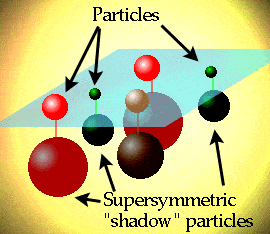A team of researchers predicted the next big thing in the world of particle physics: super symmetry, or Susy.

Baer has studies the matter for over 25 years and he now believes that the hypothetical discovery of the Higgs boson will open the door for a whole new set of particles and physical laws.
“With SUSY,” says Baer, “we are talking about the next level of the laws of physics. If there is SUSY, then we will find super partners, which will provide a new perspective for the origin and evolution of the universe. At that point, we can say we are on the road to a much deeper comprehension of nature.”
According to them, Susy is the key of understanding the main issues of cosmology, including dark energy and dark matter, as well as matter itself. But what is Susy actually? It is a symmetry that relates elementary particles of one spin with a spin different by half a unit of spin; spin is a fundamental characteristic property of elementary particles (more details here).
The LHC have already done some preliminary studies searching for Susy, but they haven’t had any success so far. Other particle accelerators are expected to announce results in the first half of 2010.
Via Physorg
Was this helpful?



